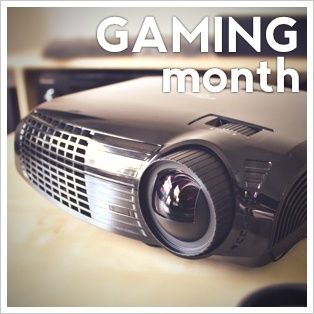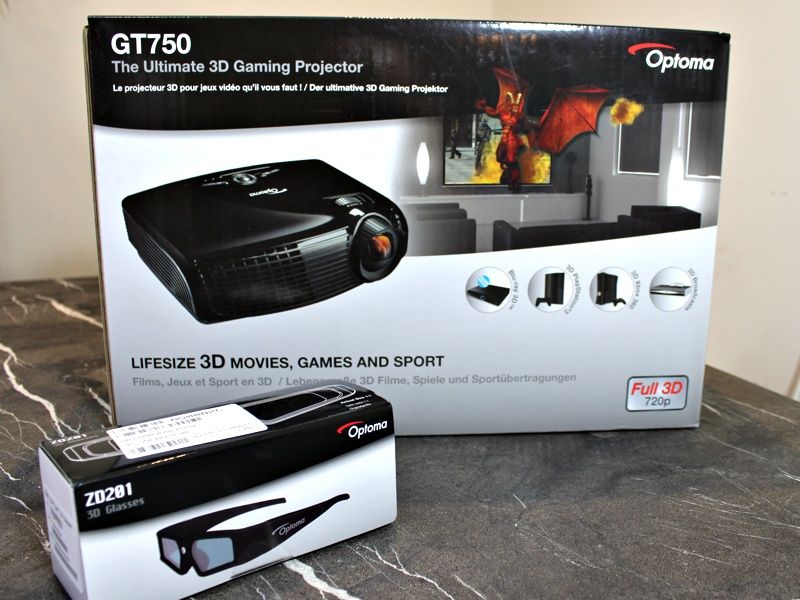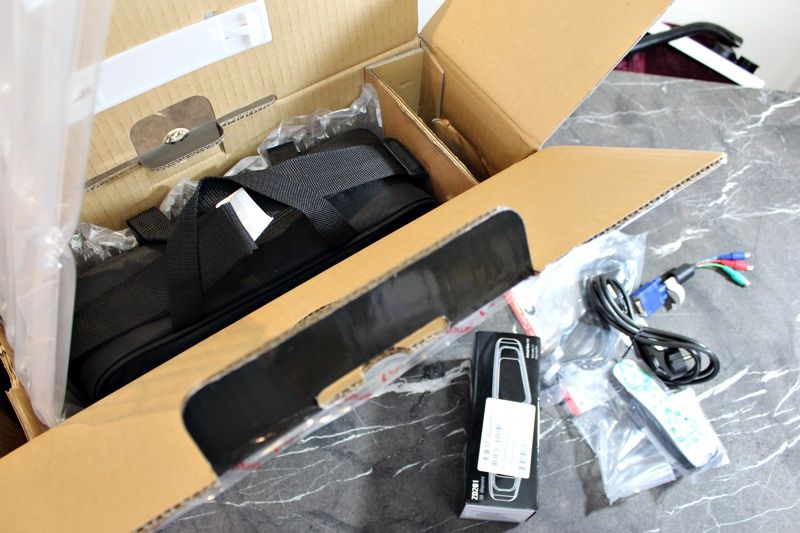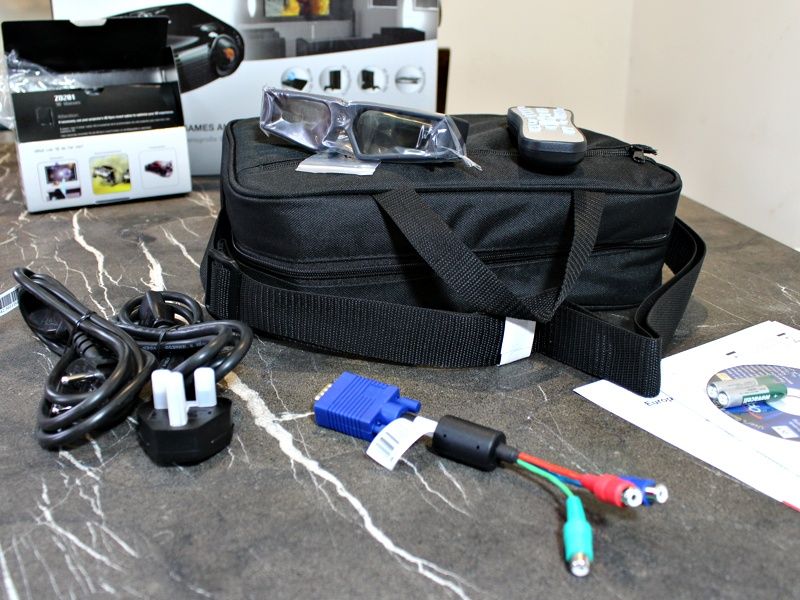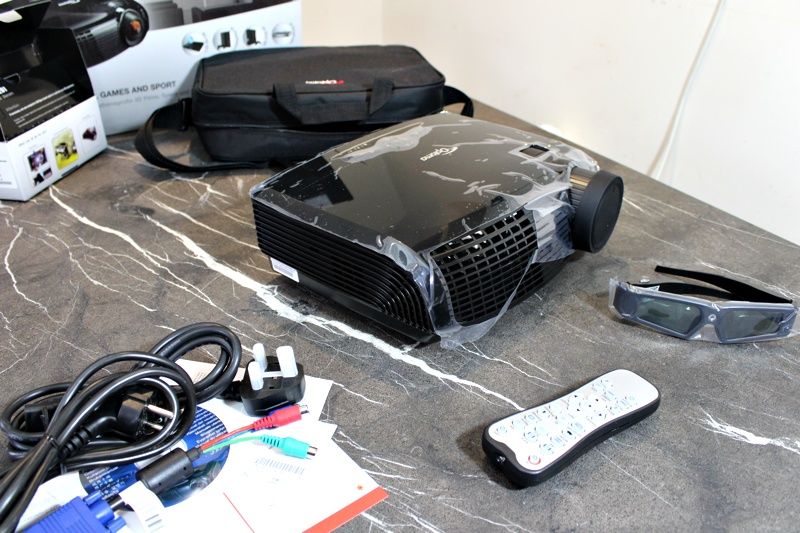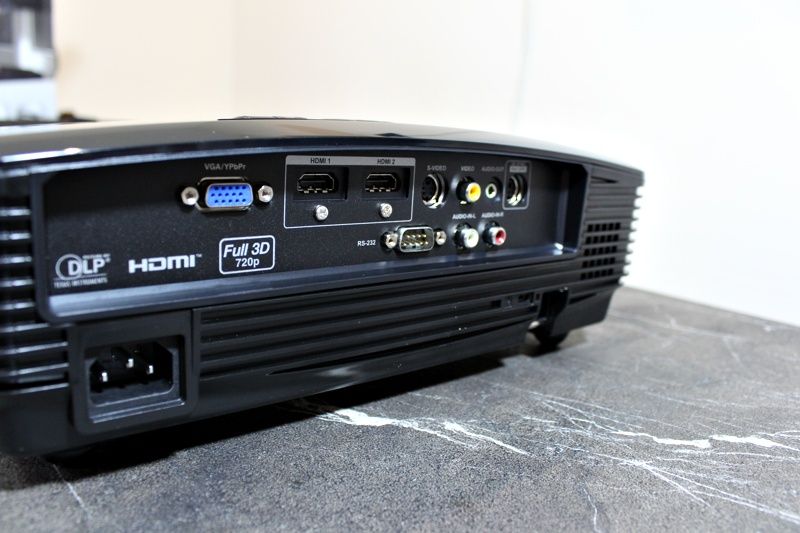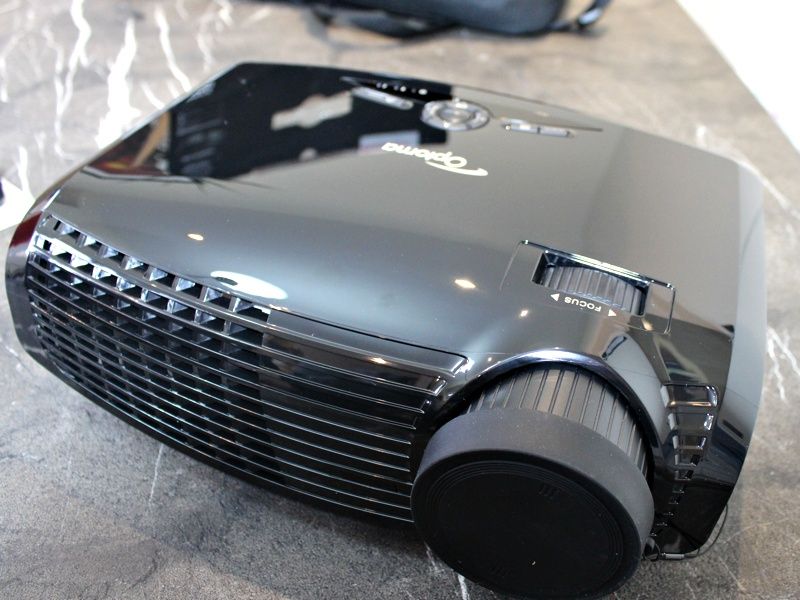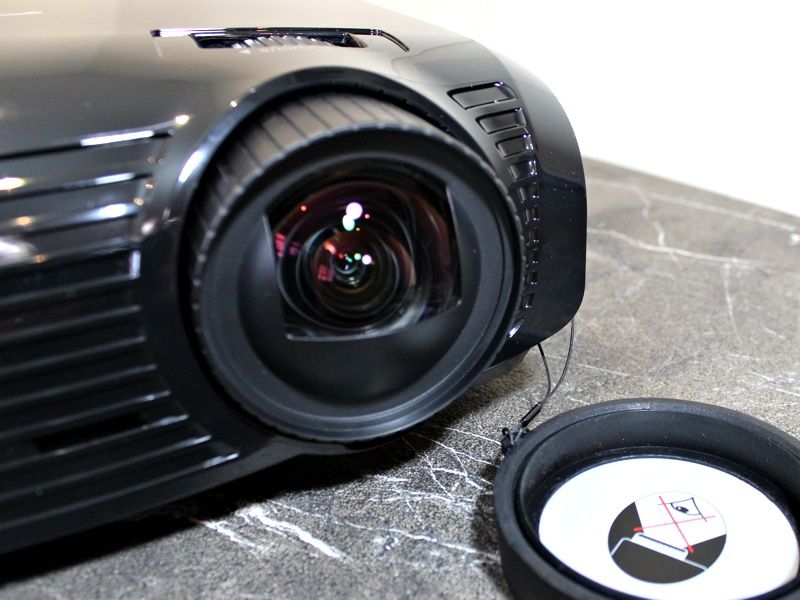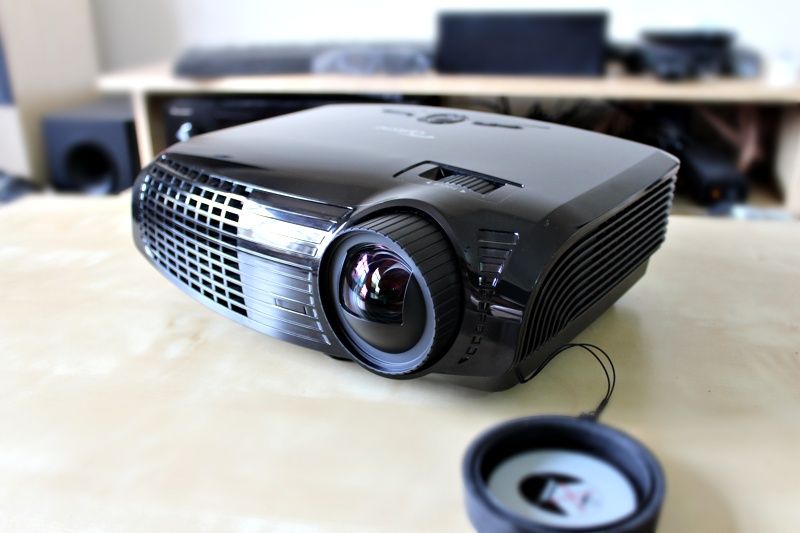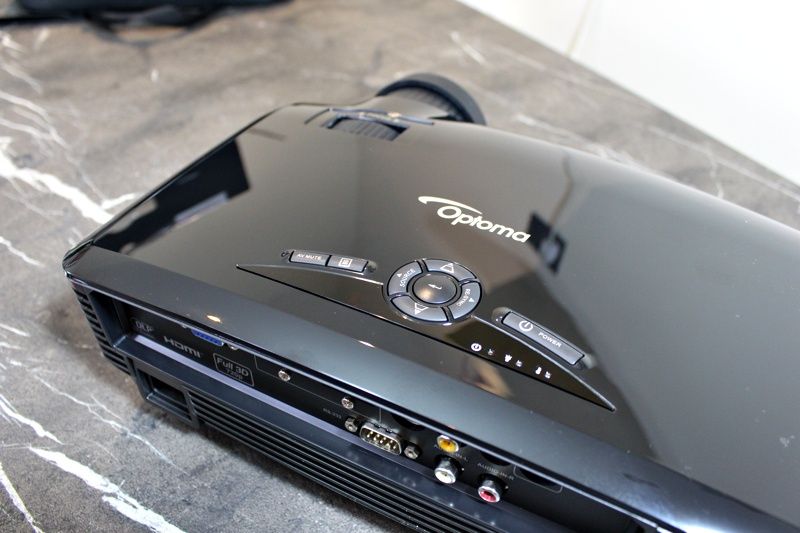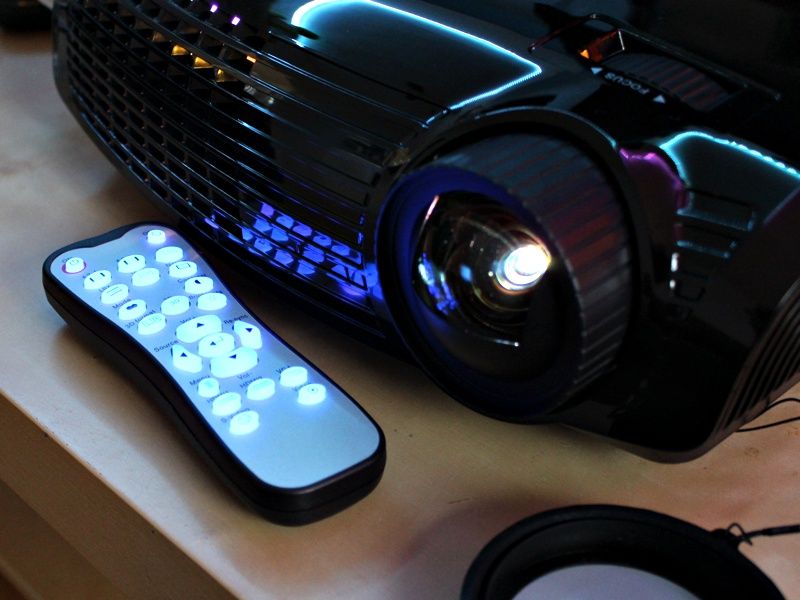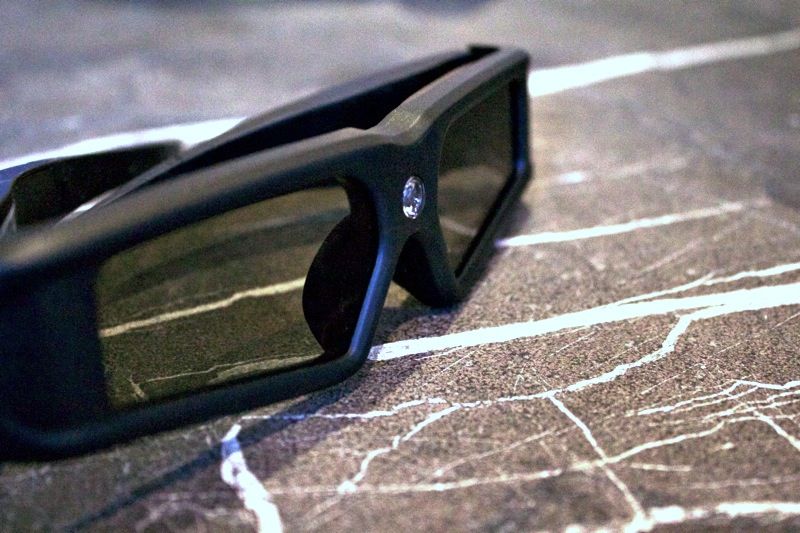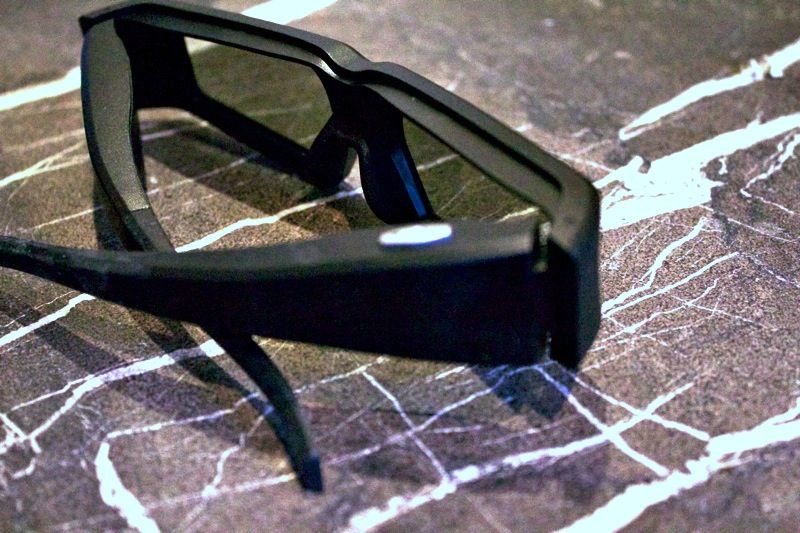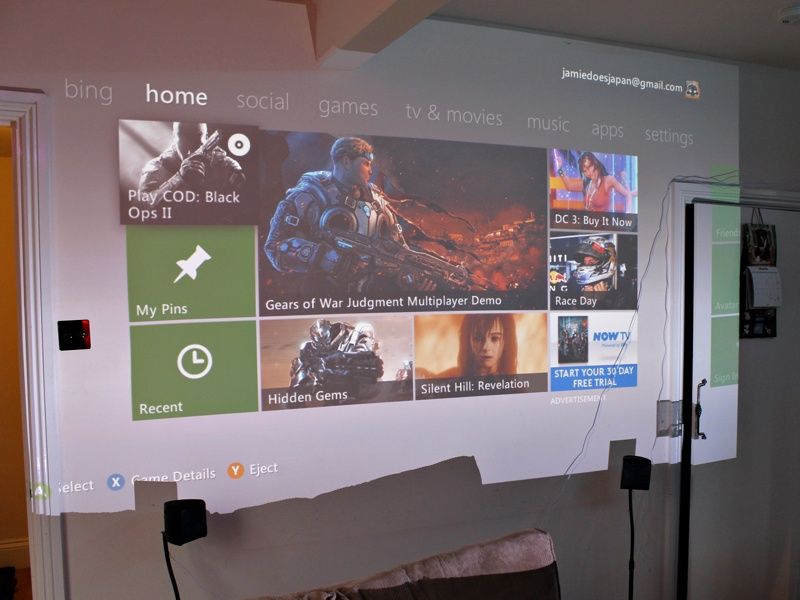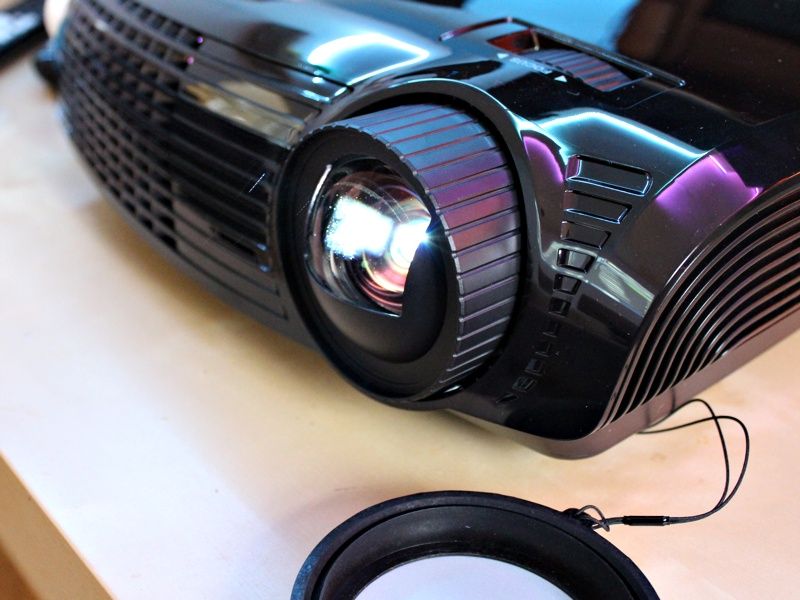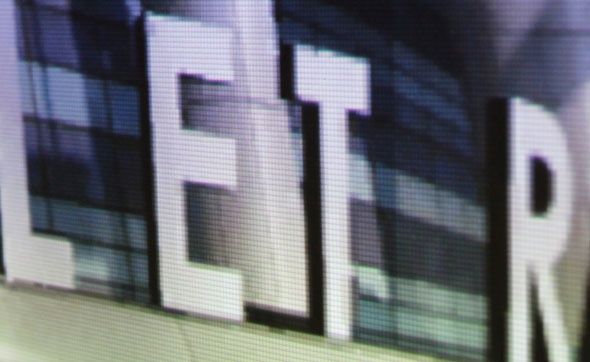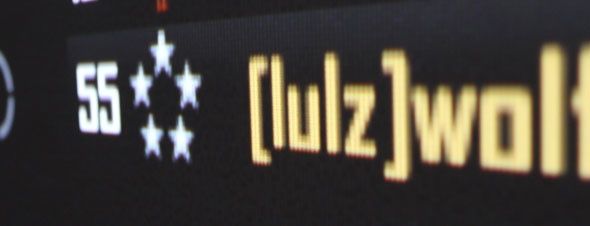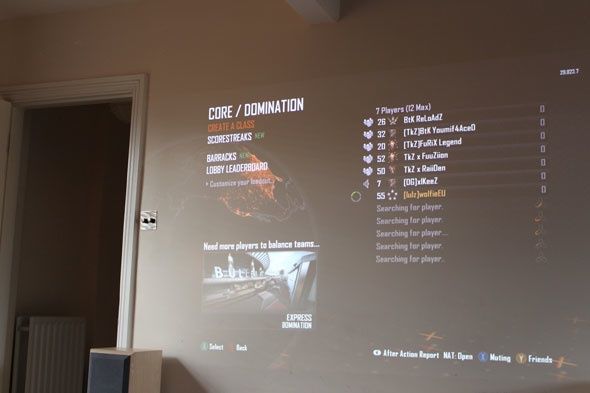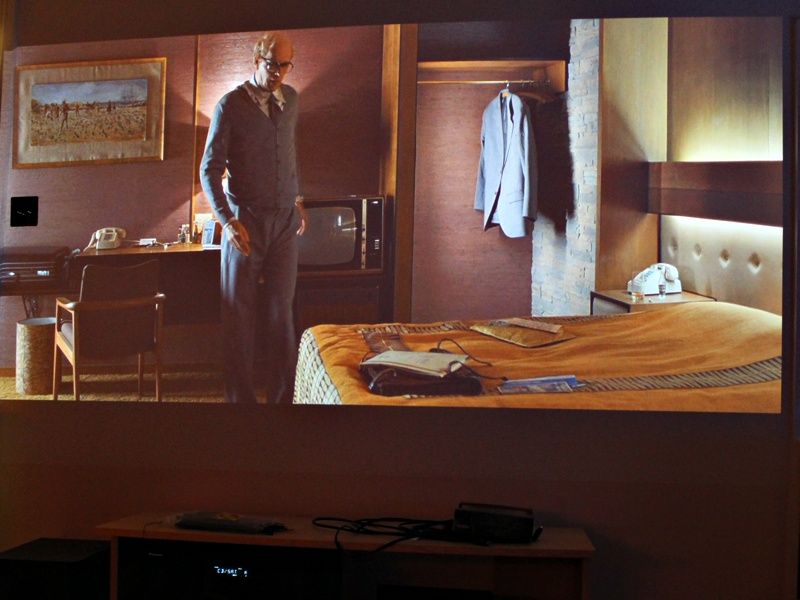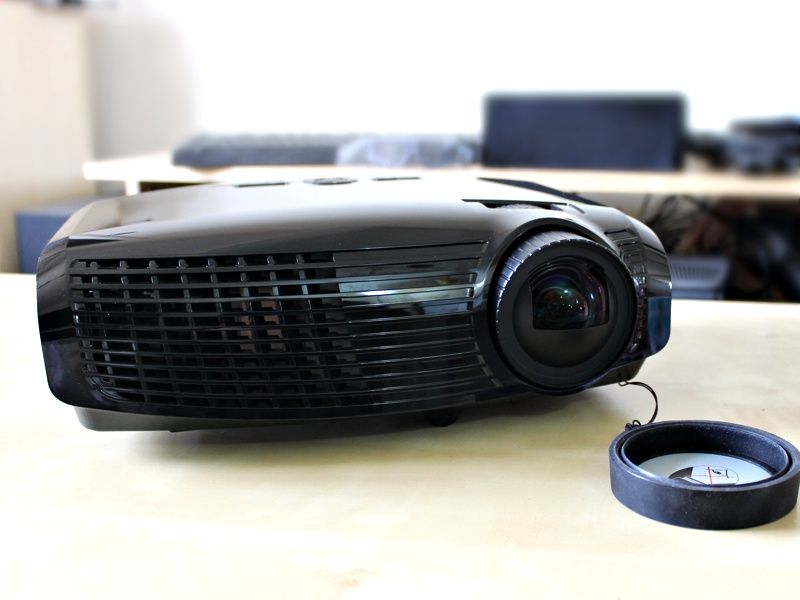Optoma GT750
I love projectors; I have fond memories of nights spent in front of the projector with all my housemates, as we snuggled under the kotatsu (a Japanese heated table thing) and settled in to watch the latest episode of Heroes. Anything done on a big screen is better - movies and gaming become a surreal experience - even compared to a 50-inch TV screen. Sure, the clarity isn't quite as good as those LED pixels or a Plasma TV, but the sheer size leads to a far more immersive experience.
Today, I'm taking an in-depth look at a mid-range projector, the Optoma GT750, designed especially for gaming; and we'll be giving this one away to one lucky reader.
Check out the other giveaways we've organised this Gaming Month!
The Optoma GT750 (the GT stands for Gaming Time, apparently), retails at around $750 and includes a pair of 3D glasses. There's a similar model (in fact, they're identical), the GT750E, which is $150 cheaper but doesn't include the glasses. We tested the GT750 with a pair of ZD201 Active Shutter 3D glasses, which we're also giving away.
- Size and weight: 324 x 234 x 97mm, 2.9 kg
- Resolution: Native WXGA (1280 x 800)
- Max resolution: VGA: UXGA (1600 x 1200), HDMI: 1080p
- Brightness and lamp: 3500 ANSI Lumens, 4000 hours
- Contrast: 3000:1
- Throw ratio: 0.72:1
- Image Size (Diagonal): 32.2" to 322.4" (0.82 to 8.19m)
- Inputs: 2 x HDMI, 1 VGA (with component adapter), S-Video, Composite, RCA stereo audio in.
Similar products to consider include: Optoma HD20 for $700, designed for home theatre and with only half the lumens value but capable of 1080p; Epson PowerLite Home Cinema 710 for $650, 720P with 2800 lumens output; and ViewSonic PJD5533W 3D 2800 lumens, $530 on sale at Amazon.
Unpacking and contents
After unboxing the relatively underwhelming yet huge Amazon box it arrived in, the Optoma GT750 unit itself was nicely packaged up with thick air cushions plus a carrying case. There were also two power cables provided for both American/European, and UK plugs (this is a UK unit).
Batteries are supplied for the remote, and there's an component to VGA adapter for older devices. A printed quick guide is supplied, but like most purchases nowadays, an actual manual is only available on disc.
For testing purposes, we've bought a pair of ZD201 Active Shutter 3D glasses. The glasses were supplied with a nose adjustment rubber bit, and battery (CR2032); and are designed to work with a new standard of active 3D called DLP-Link, so if you have any devices which conform to that standard, check if they're compatible before purchasing new ones. Suffice to say, my Samsung 3D TV glasses weren't compatible.
At the rear, you'll find two HDMI sockets - both input, so no passthrough is available - as well as VGA, S-Video, analog composite video and audio in.
Although I had no problems getting 3D through HDMI from any devices, a manual sync socket is also provided for analog 3D devices. I should add that there's a built-in 10W speaker, but it's understandably atrocious, so let us never speak of it again.
The lens cap has a very shallow lip which it fits over the rim of the lens - it feels like it should fall off any moment, but it doesn't. Placing the cap back on can be awkward though, as it has to be aligned perfectly.
The design of the Optoma GT750 is nothing to write home about; it doesn't look particularly out of place in a living room setting, but neither does it scream out for attention as some industrial designs can. The only complaint I have is the gloss black plastic - it's the kind of surface that loves to pick up dust and really highlights greasy fingerprints. A matte finish would have more appreciated, but I'm nitpicking at this point.
Operation and Setup
Upon first boot, you'll be asked to select a language. That's it; the unit will then then go off in search of a video source, scanning until it finds something suitable. The only setting you really need to care about is the image MODE button - this allows to switch between bright, vibrant gaming settings and more subdued movie mode, for example. If you've placed the projector such that it's angled, you'll also need to perform some further adjustments; however, I strongly recommend you don't do that to avoid any loss of quality, and instead physically move the device until it's perfect.
On top, you'll find a set of basic controls for power, menu, source selection, and keystone adjustment. In practice, I only ever used the power button. To turn off the device, you need to press power twice. There's a short delay of about 5 seconds during power-down, accompanied by a heavy fan noise as it cools the bulb slowly.
There's also a blue backlit remote supplied for quick access to other settings; I used this mostly to select the input source, change between picture modes, or activate 3D.
Given the amount of heat produced by the bulb, there is an audible fan noise during normal operation. In most gaming situations, you're not going to notice this, but for quiet movie scenes it could be annoying. With two computers in the living room anyway, I can't say it bothered me much.
3D
A lot of you will be put off by the fact it does 3D and might stop reading at this point - with any luck, no one will enter, and I can keep this projector for myself! Before you dismiss the 3D functionality, know that not all 3D is made equal, and the Optoma GT750 gaming projector uses the "good quality" 3D method - with active shutter glasses. You don't get the same darkened picture that you do with passive displays, and it certainly isn't one of those atrocious glasses-free implementations. Operation is simple; a long press on the on/off button activates the glasses, While within a 20m range of the projector, the infra-red detector at the front of the glasses will receive a signal, and the glasses will be operational.
It is a full-HD, bright 3D image - and having now watched a couple of 3D test movies on it, the effect is similar to a cinema 3D experience. It works with the 3D output of the Xbox 360 and Playstation (where games are compatible, the PS3 has far more than the Xbox), but I find the lag this introduces on limited console hardware to be quite detrimental to gameplay.
The Optoma GT750 accepts a variety of 3D formats, from SBS to interlaced, so there are no worries about compatiblity on that front. If you have a high-powered gaming PC, it's compatible with Tri-Def custom drivers, proprietary NVidia or ATI 3D systems (Not sure what that means? Read Can my laptop or computer do 3D?).
Additional glasses cost around $50 each, so it's quite a considerable additional investment if you're purchasing for the whole family. They also require a single CR2032 battery, and use industry standard DLP-link technology - my existing Samsung TV glasses (which I already own two pairs for) were not compatible. If you're not into 3D though, don't worry because the Optoma GT750 still a top quality projector regardless.
Throw distance, image size and pixellation
Having owned a fair few projectors before, I can tell you that the number one limiting factor has always been how far away you can place the projector from the wall. In the case of the Optoma, I pointed it toward the largest wall in my living room - admittedly, not that large at all, but there you go - optimistic that I could get a reasonably large image from a table about 2m away. It turned out that actually, my wall was too small.
The projected image is huge - I actually had to move the projector closer to the wall to get it to fit. This is technically termed as "ultra short throw distance", and the secret appears to be in the lens shape and some clever optics.
According to the specifications, the maximum distance from the projection surface is 16 feet. Therefore, using the projector's throw ratio of 0.72:1, the projection image you're going to have at that distance is a whopping 22 feet wide. My mind can't even fathom owning a house with a wall big enough to project that onto.
The image projected is 720P HD, however at this size, you are going to get some pixellation.
This problem isn't limited to this particular projector model of course - it is simply the nature of having an image that large with that few pixels - but it does illustrate that HD just isn't enough anymore. Pixellation is most obvious when using the projector as a secondary monitor output; but with gaming and movies you aren't truthfully going to notice it. Here's a sample of the text pixellation, zoomed in on a game menu screen - which is about the only situation you'll be really conscious of it.
Like most projectors, there are keystone adjustments to change the shape of the image, but for the best use of pixels you want to avoid those - same goes for reducing image size, as you're actually just chopping off pixels.
Brightness and picture quality
In the past, I've limited projector screenings to evenings or only with blackout curtains and all the lights off; the Optoma GT750 has 3500 lumens, which translates to "quite ridiculously bright". Some users have even complained that it's "too bright" for use in completely dark room, but you can adjust lamp brightness in the menu settings if that's the case.
While a specialized projection screen is obviously going to give the best possible image reproduction, a plain, matt magnolia wall was more than good enough for me, with fantastic color reproduction in movies and games. There was no moire, no delays and no discernible lag.
Lamp hours and replacement
The only downside to owning a projector is the bulb - they wear out eventually, must be replaced, and are incredibly expensive. The official replacement for this GT750 can be purchased directly from Optoma (no longer available) for around $250, though you can find suitable alternatives on Amazon for around $150.
On the plus side, the bulb is rated for 3000 hours at standard brightness, or 4000 in "eco" mode; assuming 2 hours of gaming or movies per day, that's going to last about 4 years before it needs replacing. The device will warn you when a replacement is due, thanks to its internal counter.
Should you buy the Optoma GT750 3D Gaming Projector?
If you thought your TV was big, think again - nothing beats a projector for the true home cinema and immersive 3D gaming experience. Not just for gaming, this devices works great for general TV watching and movies in 2D or 3D, though you will need to adjust the brightness as it can be a little blinding with all the lights off.
[recommend]Buy it, because I'm certainly not giving you this one![/recommend]
Seriously though, we're giving away this review unit, so join the contest!

